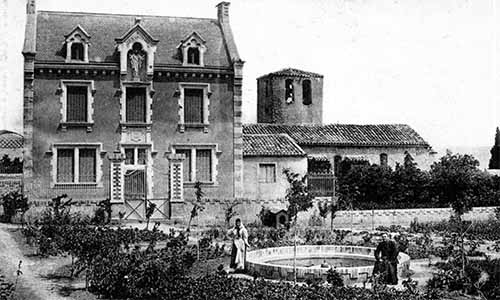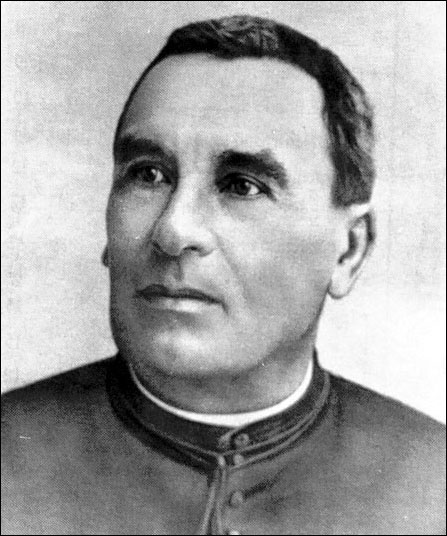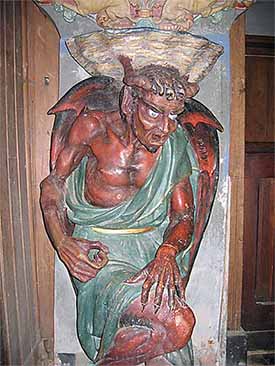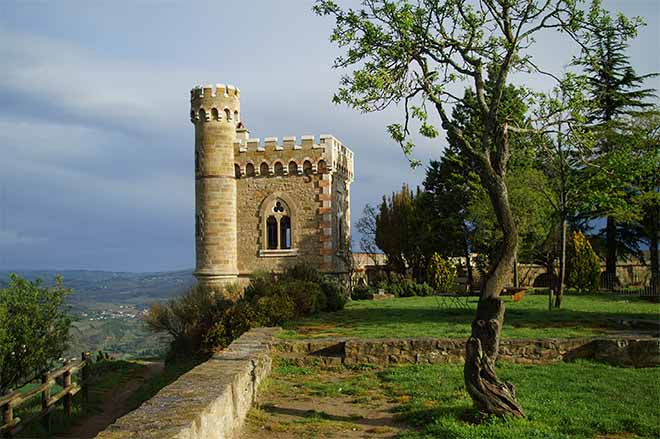Rennes-le-Château
The Secrets of the Abbé Saunière

Rennes-le-Château, a small village in the south-west of France, near Carcassone, is not easy to access. Yet, despite this, it made the front page of the press for a fantastic story of hidden treasure, missing relics and mysterious amounts of money: a lot, lot of money ... Everything starts more than a century ago, when the parish priest, wishing to restore his church, makes an astonishing discovery. We are in 1885 and François-Bérenger Saunière has just arrived at the village. The crates of the parish are empty and funds are lacking to restore the church that is falling into ruin. Nevertheless, counting his pennies, Abbé Saunière painfully manages to start some work. All this until the day when he begins to spend without counting, literally transfiguring the village ...
"Today, I found a treasure!"
The site of Rennes-le-Château was known to the Romans, Visigoths, Templars and Cathars, but also to Nicolas Poussin, eminent painter of the seventeenth century, as well as the brother of the Emperor of Austria and many artists and politicians of the twentieth century. One of the pages of abbé Saunière's diary reports this sentence: "Today, I found a treasure", which makes some say that the priest, by moving the altar for his work, would have fallen on some precious thing. Under the large stone slab, in the hollow of the support columns, he would have found four ancient parchments, two of which dated from the Middle Ages and two from the time of his predecessor, abbé Bigou. Abbé Saunière brought these documents to the bishop of Carcassonne, who authorized him to go to Paris. This trip will change his life. Indeed, the country priest does not limit himself to studying these ancient parchments aided by some specialists, but also begins to frequent Paris esoteric circles. He had a good time and spent a lot of it in front of The Arcadian Shepherds at the Louvre Museum, painted by Nicolas Poussin in 1640 and which represents a landscape where one sees an old sarcophagus with the inscription "Et in Arcadia Ego". What was so interesting in this picture as to hold the attention of abbé Saunière and push him to obtain a copy? The landscape would be that of Rennes-le-Château, although Poussin apparently never set foot there.
A strange change

As soon as he returned to the village of Rennes-le-Château, the abbe's financial worries seemed to have vanished as if by magic. He completes a restructuring of the church as expensive as it is curious, and radically changes his way of life. From now on, he spends his days studying stones gathered in the surroundings while taking long and solitary walks. In the space of a few years, it is said that he would have spent the equivalent of 15 million euros actual worth. He built a luxurious house with a garden, the Belvedere and the Magdala Tower, making it his library. He also bought new land, financed good works and made the road to Rennes-le-Château, thus facilitating the comings and goings of the many personalities who came to visit him. His house is open to all his guests. What may have changed the life and personality of the abbé so much is still unknown today. What is certain is that he now invites to his table eminent characters like Emma Calvé, the most famous singer of the time, the State Secretary of Culture, aristocrats, bankers as well as Archduke John of Habsburg, brother of the Emperor of Austria, Franz Joseph. But that's not all. Even after his death, a crowd of famous people will come to visit this lost village near the Pyrenees: François Mitterand, Marlene Dietrich, Grace Kelly, Josephine Baker and Richard Wagner, the latter having found here the inspiration, it seems, for his opera Parsifal which deals with the quest for the Holy Grail.

Saunière's mystery
1943. Under the orders of Otto Rahn, a Nazi officer fascinated by esotericism, the German army digs, full of hope, the soil of Rennes-le-Château. What is it looking for that is so precious? The treasure of abbé Saunière? What is the true secret of the priest? To know more, one must know the church, formerly dedicated to Mary Magdalene, as the abbé Sauniere had it restored. On the main portal, a Latin inscription announces "this is a terrible site", while inside, hieroglyphics refer to the mysteries of ancient Egypt. The font is supported by a demon figure, Asmodeus, who in Hebrew mythology was the king of demons and guardian of King Solomon's treasure. A stained-glass window above the altar shows the Last Supper with a woman sitting at the feet of Jesus, a cup in her hand: an evocation of Mary Magdalene that does not appear in the Gospel. So many esoteric references that are unusual to say the least in a Catholic church. And that's not all. An important clue to understanding the mystery of abbé Saunière is provided by the statues of saints in the church: the initials of their names form the word GRAIL.

But the quirks of the abbé does not stop there. He built an office with a cemetery view, just above a large water tank. However, when a large fire breaks out nearby, he refuses access to his water supply, while he usually helps the people of the village generously. To understand the reasons for this refusal, remember that according to magic experts, water is a powerful protection against negative influences. But abbé Saunière, now linked to French esoteric circles, could quite possibly need this type of protection ...
The Magdala Tower

It is a rather singular tower, steep on the Belvedere. It contains a library and ideally closes the perimeter of the house and garden that abbé Saunière had built. With what money? It remains a mystery. He never gave any explanation for his sudden financial ease, not even when the Church suspends him "a divinis", following a trial.
At the moment of his death, after having been accepted again in the Church, abbé Saunière had nothing left. He left everything to his housekeeper, Marie Denarnaud. Besides, this one was protagonist of a singular episode. At the end of the Second World War, the new francs are introduced: all those wishing to exchange their old bills were invited to officially declare their provenance. Marie Denarnaud, meanwhile, prefers to burn bill mounds in her garden of Rennes-le-Château rather than admit the origin.
So many intriguing mysteries, until the days when abbé Saunière and Marie Denarnaud seem to be jeopardized by the diary of a foreman. The man in question worked for a long time on behalf of the abbé Saunière at Rennes-le-Château, including at the construction of the Magdala Tower. He noted in his diary that the abbé instructed him to bury a chest under the tower. Would it be the famous treasure of Rennes-le-Château? The latest infrared analyzes reveal a parallelepiped shape under the tower that could precisely be the famous chest. Marie Denarnaud used to say that "the people here at Rennes-le-Château walk on gold without even knowing it". What did she mean?
Hypotheses, no certainty
The many researchers who have studied the mysteries of Rennes-le-Château and of the abbé Saunière drew contradictory conclusions. Some think that this penniless priest found a treasure in the true sense of the word, with strong jewels and precious stones, gold, silver, etc. A treasure that would be the result of the addition of all the treasures that have passed through the region of Rennes-le-Château over the centuries. First, that of Solomon's Temple in Jerusalem, stolen by the Romans, then passed successively into the hands of Visigoths and Cathars, a sect of heretics exterminated in 1244 in the nearby town of Montsegur, to end between those of the Knights Templar who built many fortresses in the region.
According to another hypothesis, the "treasure" of the abbé Saunière consists of a set of documents that would prove the truthfulness of an ancient local legend: Jesus, who would have survived crucifixion, would have arrived in southern France with a number of his disciples, including Mary Magdalene. The most common version of the legend tells however that only Mary Magdalene and a handful of Jews would have arrived in the region of Rennes-le-Château, giving birth to the first dynasty of France' kings, the Merovingians. Abbé Saunière would've therefore traded these famous documents and became immensely rich. Finally, the official version of the story says that the priest would've simply devoted himself to the exploitation of masses donations.









































































































































































































































































































































